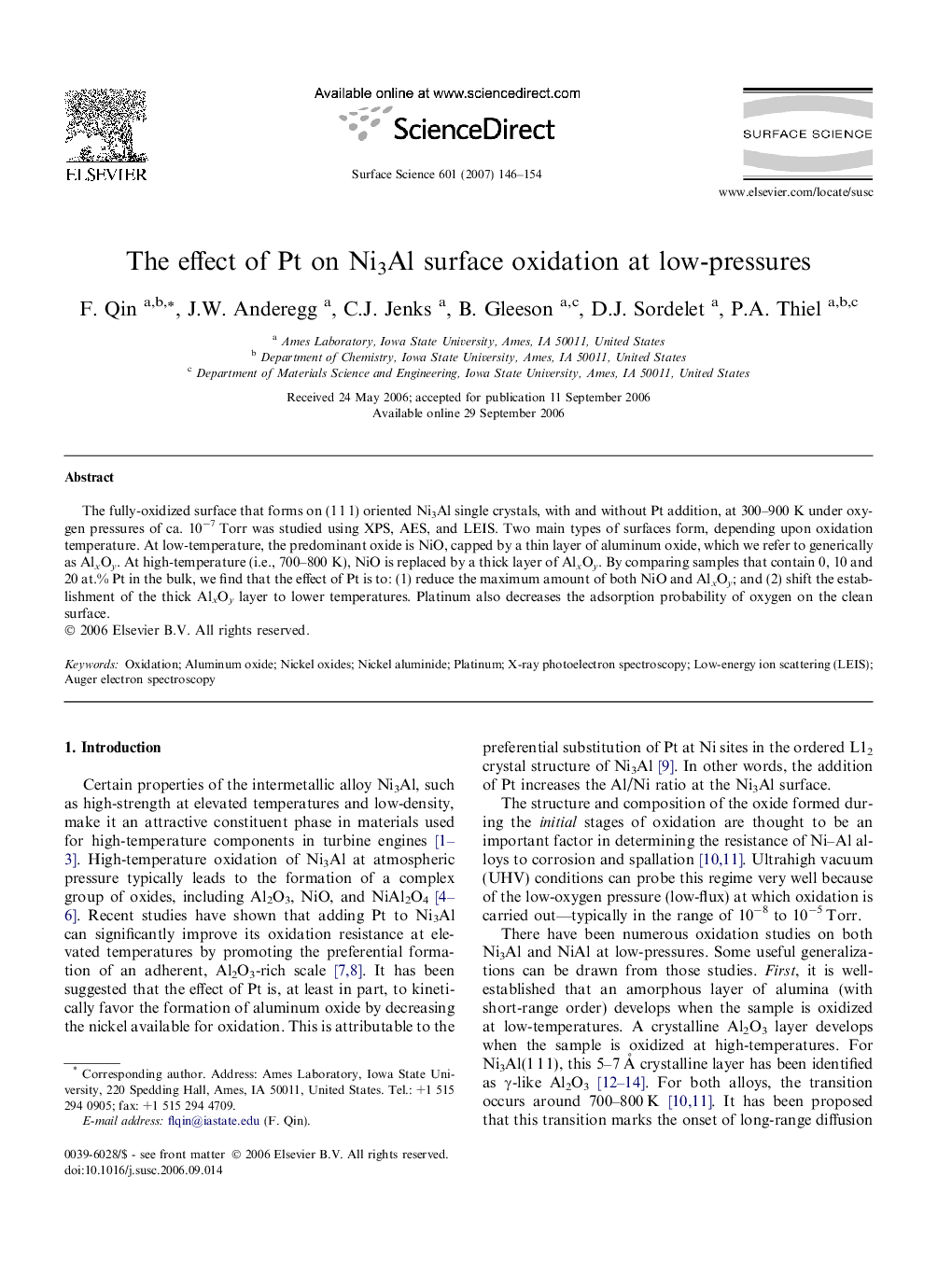| Article ID | Journal | Published Year | Pages | File Type |
|---|---|---|---|---|
| 5426237 | Surface Science | 2007 | 9 Pages |
The fully-oxidized surface that forms on (1Â 1Â 1) oriented Ni3Al single crystals, with and without Pt addition, at 300-900Â K under oxygen pressures of ca. 10â7Â Torr was studied using XPS, AES, and LEIS. Two main types of surfaces form, depending upon oxidation temperature. At low-temperature, the predominant oxide is NiO, capped by a thin layer of aluminum oxide, which we refer to generically as AlxOy. At high-temperature (i.e., 700-800Â K), NiO is replaced by a thick layer of AlxOy. By comparing samples that contain 0, 10 and 20Â at.% Pt in the bulk, we find that the effect of Pt is to: (1) reduce the maximum amount of both NiO and AlxOy; and (2) shift the establishment of the thick AlxOy layer to lower temperatures. Platinum also decreases the adsorption probability of oxygen on the clean surface.
